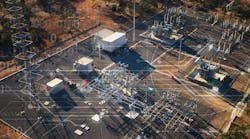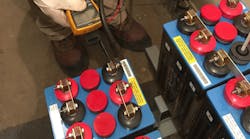The digitalization of our world has accelerated with the COVID-19 pandemic, and nowhere is it more apparent than the workplace. The biggest change has been the remote workplace. It took a great deal of scrambling to get the technologies aligned, but as we go into the second year it’s functioning well. With the economy opening, some experts are saying the next phase is using digital technology to make the world a touchless environment.
It’s driven by the touch-averse population and some amazing advancements in IoT (Internet of Things) technology. IoT is making it possible to avoid using common things like keyboards, touchscreens, light switches etc. The delta variant has made this a very important feature when it comes to getting people out and about. The technology has been around for many years, but like the early days of COVID, it’s being adapted quickly, and people are open to more cutting-edge applications than ever before.
In the workplace, workers can scan a QR (quick response) code with a smartphone and that smartphone becomes a sophisticated digital controller. It gives the user the ability to unlock doors, operate elevators, enter parking garages with a hand wave. There are also products in the marketplace designed to start the replacement of the computer mouse and keyboards. These technologies use eye-tracking processes, infrared sensors, ultrasound, and hand motion technology. Interactive touchless technology is poised to change the way we live, work, and play even more than it has.
Touchless Before Touchless Was Cool
And don’t think the power grid is behind when it comes to touchless technology. It has been an integral part of our grid for many decades. It started in the 1960s with telemetry transmitting data from remote locations (i.e., substations) to system operations. Then the 1970s saw SCADA (supervisory control and data acquisition), PLCs (programable logic controllers), and RTUs (remote terminal units), added, making the control building touchless.
System operators could operate circuit brakers, disconnect switches, etc. from hundreds of miles away by pressing a button, but it didn’t stop there. The evolution continued with the implementation of smart grid technologies along with the growing use of IIoT (industrial internet of things) technologies in the switchyard. IIoT is a spinoff of IoT specifically for the industrial sector with an emphasis on machine-to-machine communications, which opened the way some modern applications such as asset management systems (AMSs).
In the asset rich environment found in the substation, AMS platforms take advantage of many technologies. They’re designed to capture all the data flowing among intelligent electronic devices (IEDs) found on the grid. With the addition of cognitive computing and cloud-based analytics, AMSs can turn big-data into useful information. It would, however, help if AMSs included more user friendly interfaces such as touchless tech.
There is a growing acceptance of touchless technology from all corners of the technological marketplace. Last year, the marketing research company, MarketsandMarkets, projected the global touchless market to reach US$ 15.3 billion in 2025 up from US$ 6.8 billion in 2020. The report said, “The escalating demand for touchless sensing technologies in smartphones and touchless biometric solutions with upgraded tracking and controlling functionalities will create opportunities for the touchless sensing market.”
Making Remote Less Remote
As previously mentioned, when it comes to applying touchless technology, the power grid has been a leader. Substations are by nature remote. What if that could be changed? Because of the criticality of substations in the power delivery chain, most utilities physically inspect these facilities on a monthly basis and that’s costly! It’s a time consuming process and it’s labor extensive. Remoteness is a problem in a time when resources are spread thin by the pandemic.
Applying digital technology allows contactless monitoring and inspecting. It’s seen as a way to manage the substation inspection requirements more efficiently, which is a feature of the digital substation that’s getting more attention. Think of a digital substation as a being a virtual bridge between the digital and physical worlds.
Typically the term digital substation refers to an electrical substation that uses process bus technology, but it’s more than that. True, it replaces hard-wired connections with Ethernet communications, and takes advantage of the convergence of IT (information technology) and OT (operations technology) referred to as IT/OT.
IT/OT is said to provide businesses like our power delivery industry an improved system integration based on terms of automation and optimization. Manufacturers like GE, Hitachi Energy, Mitsubishi Power, Schneider Electric, Siemens Energy, and others have been heavily involved with developing the hardware and software needed for the modern digital substation.
Substation switchyards have been infused with IIoT technologies, which includes sensors, actuators, and IEDs and other digital technologies. Copper control cables have been replaced with fiber optic cables and control buildings computerized. The substation has been given a complete makeover to make it a digital substation in the full sense of the definition, but it’s not only the switchyard. The digital substation was the subject of “Charging Ahead” earlier in the year. Rather than repeat the details please see “Connecting the Digital Dots,” January 2021 T&D World (https://tdworld.com/21149706).
Upping the Game
The digital transformation requires a communications portion, a control and protection element, and a process element working together. Add artificial intelligence with cloudy-based data handling and there is also a degree of automation. When all of these elements are combined, they advance AMSs to the degree necessary to move the digital substation to the prominent role needed by the modern grid. A recent conversation with Dave Goddard, head of digitalization, Hitachi Energy, brought up some interesting perspectives about what is going on with the digitalization of substations.
Goddard said, “There is a great deal of work taking place in OT edge computing to manage operational data sources. There is a need for asset data flexibility to enable data to be moved between any platform while avoiding the creation of new data silos. The goal of this OT edge computing is to be able to visualize the condition of the asset without having to be there to physically see the asset. This approach provides a 3D spatial representation of the substation, with the locations of its assets and the ability to virtually touch them.”
Goddard went on to explain, “Recently Hitachi Energy launched its “Smart Digital Substation offering, which joins the latest in digital substation technology with Hitachi’s Lumada Asset Performance Management (APM) solution. By incorporating Lumada APM into the digital substation technology, utilities are provided with the next level of capabilities. This holistic architecture is a dynamic digital replica, a digital twin if you will, of the entire physical substation based on data gathered from the digital substation for a touchless substation experience.”
He continued, “While asset performance management improves the reliability and availability of the physical assets with visualization and analytics. We can do more, digitalization is a journey toward autonomy. Bringing IT and OT together allows this digital twin approach to expand to a larger scale. It’s a holistic view of the entire enterprise making possible a virtual twin of the enterprise.”
Deploying these types of digital technologies are reducing maintenance and operational costs for utilities. They are also making the substations more resilient and improve the availability of physical assets. In addition to the offerings from digital substation suppliers, utilities are adding touchless technology to lessen the need to dispatch crews to remote substations.
Send in the Robots
These devices include oil and gas analyzers, battery/charger monitors, bushing monitors and other IIoT capable devices. Many switchyards are being equipped with high-resolution CCTV and infrared cameras, but one of the most innovative additions are the inspection robots like Boston Dynamic’s Spot, the quadruped robot.
These robots have both high-resolution zoom and infrared cameras that allow technicians to do virtual walk-through inspections of the substation. The technician can direct the robot around the station looking for potential problems such as oil leaks, check for hot spots, take readings from gauges and meters.
The robots also check the security of the station by walking the perimeter fence, but it is autonomous functions that are proving valuable. They let the robots perform independent daily inspections making recordings at preselected points without any human interface. The cloud-based data is available throughout the organization for review.
Utilities around the world are building digital substations and they have been for many years, but today’s advanced substations are taking digitalization to a new level of networking. Interconnected digital substations utilizing digital twin technology can share information in a joint support scheme, which increases situational awareness and increases efficiency of operation.
Taking this trend a step further, remote portions of the grid are no longer remote when the real-time condition of any asset in any substation is only a click away. Using digital twin technology, utilities can improve their workforce’s need to work remotely, while improving resiliency and reliability of the assets. Digitalization is the key tool in modernization!


